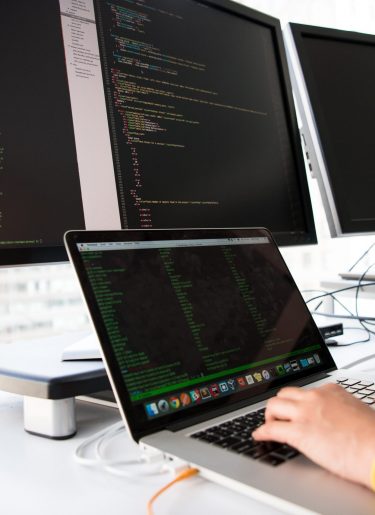
At the factory gate or in front of a computer, strikes can happen anywhere. Or can they? In Germany, trade unions have started to digitise the previously rather analogue right to strike in a ‘just do it’ way (without formally defined procedures to reflect these new realities). The question of whether digital strikes are legal is closely related to the question of whether trade unions have a ‘right of digital access’ to the workplace at all.
The conduct of a strike, that is, a collective, planned cessation of work by a large number of workers without the employer’s consent, is usually accompanied by certain (publicity-boosting) actions by the trade union. If these actions take place digitally, this is described as a ‘digital strike’.
The model of a purely digital strike is still in its infancy and it can take many forms. So far, the first digital strikes have taken place without any physical meeting happening, with trade unions providing dial-up links to digital meeting rooms. Workers could use these links to dial in using either work or personal devices. In addition, workers were also given the opportunity to choose to actively participate in the strike via voting tools in so-called ‘real-time polls’.
Another form of strike is the hybrid strike. In hybrid strikes, the main part of the strike action takes place through the physical presence of the strike participants, usually in places that are visible to the public (e.g. picket lines). This strike action is also streamed digitally to enable workers who are not present to participate from home.
The law on industrial action in Germany has so far remained largely unregulated by statue. Legality requirements are constantly being developed by case law. For digital strikes, this means that, first of all, the general legality requirements for physical strikes apply. For example, a strike may not violate the obligation to maintain peace during the term of collective agreements and that the strike objective may only relate to content that is covered by collective agreements. The extent to which the employer’s premises may be the venue for strike action has been the subject of decisions by the highest courts lately (e.g. most recently a Federal Labour Court judgment of 20 November 2018 confirmed by the Federal Constitutional Court on 9 July 2020).
Digital strikes also entail the risk that, in the absence of physical presence, the employer’s legal rights can be violated in a comparatively inconspicuous way. For example, the employees’ participation in digital strikes can be problematic if it takes place via official IT devices or generally via the infrastructure provided by the employer. This applies in particular if the employer’s rules state that devices and infrastructure may not be used for private purposes. In addition, in individual cases, freedom of association or property and ownership rights as well as the employer’s domiciliary rights may be unlawfully breached. There may also be a risk of violating company data security and confidentiality requirements. When assessing the legality of individual digital strike measures, the interests of the trade union, the employees and the employer must always be weighed against each other.
The legality of digital actions accompanying a strike that have an impact on the employer’s business also depends, crucially, on the extent to which the union has a right of digital access to the business. There have not yet been any Federal Labour Court decisions on this issue (only a Bonn Labour Court ruling).
It is undisputed that trade unions have a general physical right of access to the employer’s premises derived from Article 9 (3) of the Basic Law. This constitutional right enables trade unions to carry out its activities, in particular advertising, information and consultation activities.
It is questionable whether the right of access to the workplace, which has so far essentially only been understood in physical, analogue terms, already includes a digital right of access (please see this article and video by Dr Burkard Göpfert in German for more on this).
A key points paper of the Federal Ministry of Labour and Social Affairs from March 2021 provides for a new regulation in the Collective Bargaining Act which would mean that workers’ associations would be entitled to use electronic communication systems in the workplace. So far, this idea has not been implemented. Whether digital calls for strikes or other encouragement to participate in (digital) strikes are already permissible is questionable and requires a precise examination of the facts in each individual case.
First of all, employers themselves can try to prevent unlawful or at least undesirable strike action. To this end, employers (associations) can conclude collective agreements with trade unions that establish ‘guard rails’ for trade union (digital) powers in the employer’s company.
Immediately before a (digital) strike or during the strike itself, employers should closely monitor trade union activities, particularly in the workplace. If there are indications that the digital strike may jeopardise the company’s cybersecurity, for example, the employer should claim for immediate injunctive relief.
If the union does not give in, the next step, in the context of the law on strikes, is normally to bring interim injunction proceedings to stop certain strike measures or even the entire strike. Normal court proceedings on the merits are also possible, but these usually only make sense if the issue is liability for damages suffered due to unlawful strikes or strike measures that have already taken place.
When digitalisation meets a largely unregulated right to strike, the result is legal uncertainty, at least for now.
In a digital strike, the work stoppage by workers is complemented by digital action by the trade union. Depending on the proposed strike action and how workers actually take part digitally, employers’ rights may be violated. It has not yet been clarified when a lawful digital strike becomes an unlawful digital strike. In the future, case law will define when and how digital strike action is legal. For now, employers should always keep an eye on the exact individual circumstances to be able to seek legal remedies against unlawful strike action if necessary.
#strikes #workingfromhome #remotework #unions #Germany
For more information about worker representation



